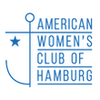Interviewing John Greyson about "Fig Trees"
by Shelly S.
Director John Greyson has ingeniously created a documentary opera about two AIDS activists living half a world apart. Tim Caskell in Toronto and Zackie Achmat from Capetown had major political struggles in obtaining treatment drugs for AIDS patients in 1999.
When did you meet Zackie Achmat?
I met him in 1993 in South Africa. He is an amazing dynamic personality with innovative ideas. “The film describes Zackie Achmat as a crusader. He has creative ways of catching the eye of the public, press and politicians in order to make a statement. He is the founder of the group TAC (Treatment Activist Campaign) that organized several campaigns against drug companies and the government in order that AIDS victims could receive drugs at affordable prices. In 2003 He organized a T-shirt campaign where everyone wore T- shirts “I am HIV positive” which eliminated the stigma of this illness. He also used the idea of strikes by refusing to take his own drugs. This drew the attention of Nelson Mandela who personally came to plead with him to resume his medication.
In 2004 Achmat (photo left) was nominated for the Nobel Peace prize and was listed in the top 100 of Great South Africans.
Like John Greyson, the other AIDS activist, Tim Caskell comes from Canada. Tim Caskell is a long time AIDS survivalist. He is the founder of AIDS Action Now and has been working on the availability of drugs as well as awareness of the sickness in Canada.
How did you work on putting these two documentaries together?
I used all sorts of footage from super 8 to digital and it was important to me that the footage was brought up to a high quality. I just completed the final cut right before I arrived here. There were documentary interviews, speeches, demonstrations and many other related scenes, which were incorporated into the story line. “Grayson wanted to get away from a straight-forward documentary and Fig Trees has become a multi-media project with mini sections that can be used separately from the film.
How did you come up with the concept of using opera as a backdrop?
That was the work of Dave Wall. He is the composer in this movie and he was very instrumental in organizing that aspect of the film. “Greyson uses a fictional Gertrude Stein character that writes a tragic opera, which becomes an opera for social change. The two main characters are transported to Niagara Falls, which gives this film a very surreal feeling, which actually seems appropriate since it reflects back to the time period when Gertrude Stein lived. The film is filled with layering and symbolism. Even in the borders there is a running poetry text, which could be deciphered but with the same play on words that we see in Stein’s work. At one point they take the music of the opera and invert it so that it is played backwards which sounds crazy but it works.
Greyson said that inversion of music has been done since the 1700s and was just one more added creative aspect. He uses split screens as well as mini multi-media art instillations to tell this story of fighting for pills. One of my favorite parts were the top 10 AIDS pop songs where he changed popular songs to fit this venue.
Where do you think this film will go from here?
It will go to the Gay Film Festival and to some other film festival circuits.
He wants to stay with this theme and has no interest in working in mainstream filmmaking. Fig Trees is a highly creative film and won Best Essay at the Teddy awards and if you are a viewer who likes to face a challenge, this film should not be missed.
